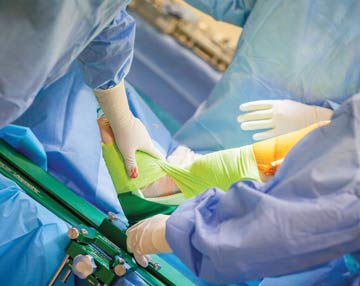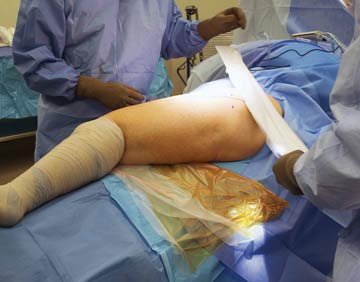The proper positioning of patients undergoing orthopedic procedures prevents nerve and skin injuries and gives surgeons better access to the joints they're repairing or replacing. Spending a few extra minutes before cases begin to make sure knees are flexed, hips are hyperextended and shoulders are secured pays off in successful outcomes and safer patient care. Charlene DiNobile, RN, M.Ed, CNOR, CST, NEA-BC, CSPDT, CFER, a professor at the New England Institute of Technology, says you should focus on these pillars of proper positioning:
- Primary goals. Focus on protecting muscles, nerves and bony prominences, ensure adequate exposure of the operative site and maintain a functional airway. Take extra care of high-risk patients such as the elderly and those with comorbidities, especially diabetes or vascular disease. Consider the patient's overall skin condition, friction and shearing risks during surgery and expected length of the case when determining pressure injury risk reduction strategies.
- Positioning aids. Utilize effective positional aids by basing your choices on evidence-based practice. Take the time to review manufacturers' details on cleaning, usage and safety. Make sure you have access to the latest instructions for use and staff and physician competency information.
Don't rely on egg crate foam surfaces and traditional pillows, as they do not distribute pressure effectively and tend to compress quickly under the weight of the patient's body. If you are using these types of materials, however, it's best to support low weight-bearing areas, such as under the knees.
Finally, confirm that needed positioning aids are on hand and ensure staff have the working knowledge, through in-servicing, of how to use each device safely and effectively.
- Skin checks. Assess and document the patient's skin condition before surgery. Reassess skin integrity during cases involving patients who are in the supine or prone position for more than six hours and the lithotomy or lateral decubitus position for more than three hours. Agree upon times during lengthier cases when the surgical team will perform skin assessments at pressure points, conduct range of motion exercises and reposition the patient as needed.
It's also crucial to assess the patient's risk for a positioning complication. "Gain as much information as you can about their range of motion status in pre-op," says Jenni Prevatt, MS, RN, CNOR, quality improvement nurse analyst and surgical nurse reviewer at UC Davis Children's Hospital in Sacramento, Calif. "Explain to the patient how they will be positioned during surgery. That way, they'll be more likely to speak up if they foresee a positioning issue based on their known range of motion limitations."
.svg?sfvrsn=be606e78_3)


.svg?sfvrsn=56b2f850_5)